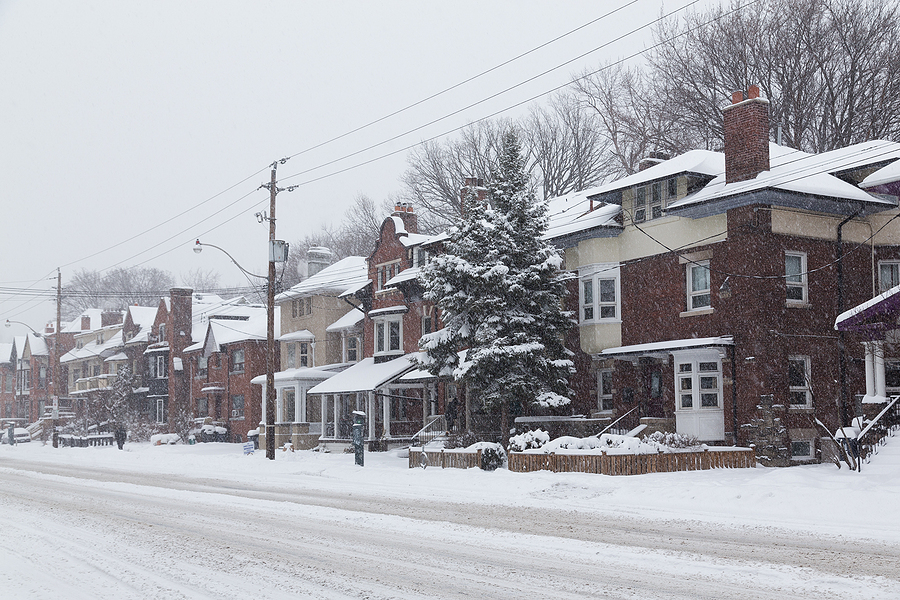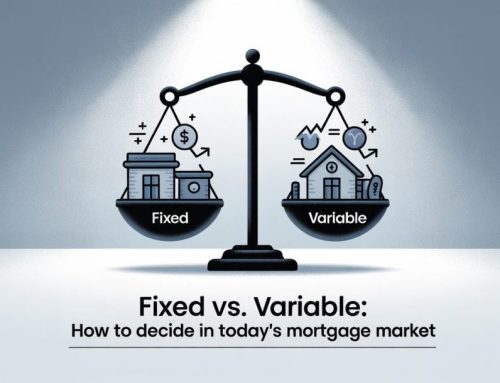Given the significant increases to mortgage rates over the past year, it may go without saying that many are feeling the pinch. Particularly those in variable rate mortgages and those with mortgages coming up for renewal. Seeing your payment increase by hundreds (or more) per month can be stressful for anyone. Afterall, it’s not like you’re getting anything for that extra money.
But it can be more than just stressful.
It can have a significant impact on your quality of life and mental health. Not to mention, tight finances can also lead to relationship or marital issues.
While none of us have any control over mortgage rates, there still may be options to reduce your payments which can relieve some of the financial stress.
Let’s first look at how payments have been affected in a few different situations. We’ll then get into what you can do about it.
The Effect of Mortgage Rate Increases on Your Payment
Below are three different examples of common situations where higher rates are problematic. Note that I’ve rounded the payments to the nearest dollar for simplicity.
Example 1:
5 year fixed up for renewal
Original Mortgage
Closing date: May 2018
Original balance: $650,000
Rate: 2.99%
Amortization: 25 years
Monthly payment: $3,072
New Mortgage
Closing date: May 2023
New balance: $555,478 (assuming no additional payments were made)
Rate: 4.49% 5 year fixed*
Amortization: 20 years
New monthly payment: $3,498
Payment difference: $426.07
Despite paying your mortgage down by almost $100,000, the monthly payment would jump by $426 due to the higher rate.
Example 2:
5 year adjustable rate mortgage (payments changing with rate) up for renewal
Original Mortgage
Closing date: May 2018
Original balance: $650,000
Rate at start of term: 2.45% (prime -1.00%)
Rate as of today: 5.70%
Amortization: 25 years
Monthly payment at beginning of term: $2,896
Monthly payment as of today: $4,044
Payment difference prior to renewing: $1,148
New Mortgage
Closing date: May 2023
New balance: $549,621 (assuming no additional payments were made)
Rate: 5.50% (prime -1.20%)*
Amortization: 20 years
New starting monthly payment: $3,762
While your monthly cash flow increases by $282 at renewal due to the larger discount off prime, you would still have to contend with a monthly payment that is $866 higher than it was when your mortgage started.
Was fixed or variable the better choice?
Before we get into the third example, you may have noticed that despite the large increases to rate and payment, the balance at the end of the term was $5,857 lower with the variable compared with the fixed rate. Despite all the rate hikes, there was so much front-end savings that a borrower in that situation would have still come out ahead with the variable rate.
But that’s just the difference in ending balance. In order to calculate this correctly, we would need to match the payments on each option for the entire term. In this case, the savings with the variable rate option would have been $13,226 at the end of the term (assuming we don’t see another rate hike before May). This is the only way to calculate the true savings.
I digress.
Example 3:
Adjustable rate mortgage mid-term
Original Mortgage
Closing date: May 2020
Original balance: $650,000
Rate at start of term: 1.50% (prime -0.95%)
Rate as of today: 5.75%
Amortization: 25 years
Monthly payment at beginning of term: $2,598
Monthly payment as of today: $4,063
Payment difference: $1,465
The difference in payment is substantial in this case, increasing by $1,465 or 56.39% from when the mortgage began almost three years ago. In this case, the mortgage closed when prime rate was at its lowest.
How to Reduce Your Mortgage Payments
Now that we’ve explored the effect of the rate increases in three different scenarios, we can now get into what you can do to reduce your payments.
There are three possible options:
- Switch to monthly payments
- Convert your variable into a fixed rate
- Increase your amortization
1. Switch to monthly payments
The most popular payment frequency is accelerated biweekly as it’s the easiest way to pay your mortgage down faster. By choosing accelerated biweekly payments you can knock a 25 year amortization down to less than 22 years. The payment is also super easy to calculate. You just take your monthly payment and divide it in half and voila, you have your payment amount.
For example, if you started with a mortgage of $600,000 at 4.49% amortized over 25 years, the monthly payment would be $3,317.50. The accelerated biweekly payment would be exactly half this amount, which is $1,658.75.
Sounds simple enough, right?
Many view accelerated biweekly as paying the same amount but making the payment every two weeks instead of monthly. Yes, you are paying the same amount…. but for only 10 months of the year. There will be two months where there are three payments, which makes it equivalent to making one extra monthly payment per year which is applied directly to your principal.
This is how it has such a big impact on paying your mortgage down faster.
If we take the $1,658.75 accelerated biweekly payment and multiply it by 26 payments and then divide it by 12, it’s equivalent to making a monthly payment of $3,593.96, which is $276.46 higher than the monthly payment option.
If you’re looking to increase cash flow, all you need to do is change your payment frequency to monthly. Most lenders will let you do this for little to no extra cost. This may sound obvious to some, but there are many currently making accelerated payments, yet they are struggling financially.
This is the easiest way to increase your monthly cash flow.
Most lenders will have an online portal where you can make the change without even having to speak with anyone.
2. Convert your variable rate into a fixed
In most markets, converting your variable rate into a fixed would result in an immediate increase to rate and payment. But we’re living in a different time where variable rate mortgages are around 1.00% higher than the fixed rate alternatives in many (if not most) scenarios.
There are two ways to convert your variable into a fixed rate:
- With your current lender
- Switching to a different lender with a lower rate
The first is to reach out to your current lender to find out what fixed rate they can offer you if you were to convert. This can be done without any penalties or fees.
The second option is to switch your mortgage to another lender offering a lower rate. This would involve breaking your mortgage, which means the standard three months interest penalty would apply. The rate would need to be low enough to offset the penalties of course.
If you would like to consider this option, please reach out to us and we’d be happy to do the math for you and advise if you would come out ahead by switching vs. converting with your current lender.
But is converting your variable rate into a fixed a wise decision? It will result in an immediate drop in payment, which can provide some much needed financial relief for some. In these situations it can be a good idea. I discuss this in detail in my recent blog on converting your variable rate into a fixed.
3. Increase your amortization
Amortization can be defined as the amount of time it takes to pay your mortgage down to zero assuming equal payments. The longer the amortization, the lower your payment. Regardless of whether you are staying with the same lender or moving to another one, refinancing your mortgage is the only way to extend it. However, there may be some rare exceptions if your mortgage was insurable, but it’s case by case. For most situations, refinancing would be the only option which means the standard penalty would apply. With refinancing, the full penalty can be included in the new mortgage. You even have the option to take out additional funds if you have debt you want to consolidate, which can significantly reduce your overall monthly payment requirements. You can also finance renovations, or even take out some extra cash if you feel it will give you a bit more peace of mind.
Let’s say you owe $475,000 on your mortgage and are currently in a variable rate at 5.70% with a 15 year amortization and a monthly payment of $3,303.37. The penalty to break $6,768.75 + discharge fee of roughly $350 for a total of $7,118.75. There would also be a legal fee of roughly $800 for a total cost of $7,919. If we refinanced for the mortgage amount + penalty at $482,919 at a 3 year fixed rate of 4.99%, the new monthly payment would drop to $2,574.41.
The lower rate and longer amortization has increased your monthly cash flow by $729.
Yes, you’ll pay more interest if you maintain the original payment schedule with a longer amortization. You’ll also be paying a penalty. But this blog is not about how you can save the most money over time. It’s about how you can reduce your payments to ease financial stress. It really comes down to your goal and everyone’s situation can be a bit different.
Conclusion
It’s great to save as much as you can over the life of your mortgage. But maximizing savings will generally involve higher mortgage payments. Either by starting with a lower amortization, choosing to make accelerated payments.
If you’re already struggling to pay your bills and your life is miserable because your worried about money, then it might be time to consider doing something to lower your mortgage payment. I’d rather be $5,000 poorer at the end of 5 years and live my life free and happy rather than being miserable because of financial hardship. It’s just not worth it. The money you can make back. But that time will be lost forever.
Everyone’s situation can be a bit different and there is no one size fits all mortgage advice. If you’re currently struggling with higher mortgage payments, please reach out to us directly and we would be happy to discuss your options for your specific situation.








Leave A Comment